Weekly birding round-up: 13 - 19 Apr 2021
On the whole, the week just gone was a quiet one. Some migrants trickled through, with birders on Scilly in particular enjoying a steady stream of good things, but for the most part rarities remained just that, rare. Nonetheless, East Sussex still had some star quality on offer, while Suffolk offered something a little more subtle.
I remember, all too well, the terrible error of judgement that was taking a date to Dungeness for Kent’s first Iberian Chiffchaff in mid-April 2001. Whether it was the crushingly underwhelming, distant views, my excitement at hearing the bird intermittently in song, or my insistence we go and ‘check the Patch’ before we left Dunge, the date didn’t go well.
Let’s blame it all on the looming omnipresence of a nuclear power station that brooded over us all evening… and fast forward twenty years to another nuclear power station, and another Iberian Chiffchaff, this time a bird found in Suffolk in the shadow of Sizewell on 14th-15th.
How times have changed in those intervening decades. Iberian Chiffchaff has gone from gross rarity to annual arrival in Britain. They’ve even bred here. What’s not got any easier is being absolutely sure about one. Sonograms are all well and good for proving, categorically, that what sounds like an Iberian Chiffchaff to the fallible human ear really looks the part too… but nothing clouds the issue quite like a bird that’s not following the script.
Take this week’s Sizewell bird. As the old adage goes, if it walks like a duck, and quacks like a duck, it’s a duck, right? What then do we make of an Iberian Chiffchaff that sings like one for half an hour, then gives a blast of fluent Chiffchaff, and then, just for laughs, does convincing Willow Warbler too? A mixed-singing head scratcher for sure, and a headache for the BBRC once it’s submitted.
Nr Sizewell today. Occasionally gives a short more chiffchaff like song. pic.twitter.com/gZLJrc11f5
— Kevin DuRose (@durosekevin) April 15, 2021
Some birds have turned up here in the past twenty years, stayed a while singing like an Iberian Chiffchaff, and then started to throw some Chiffchaff into the mix. The theory goes that they may have acquired some new phrases from the surrounding Chiffchaffs. Where though do we set the bar for them?
Suffolk wasn’t done with us this week for, a couple of days later, another bright bird was found, this time singing in Kesgrave on 17th-19th. All well with this one? Well, apparently it sings just like an Iberian Chiffchaff… apart, according to some, for a small stutter at the end of its song. If so, again, where do we set the bar for what’s acceptable, and what’s cast into limbo?
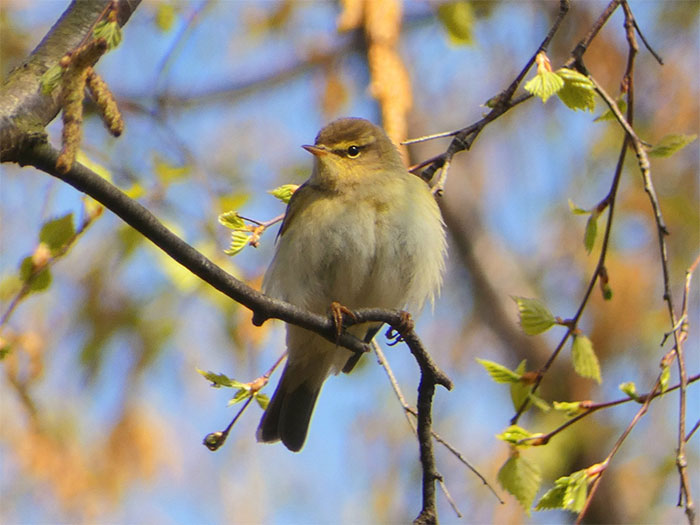
Here's a video of the Iberian Chiffchaff showing the sonogram pic.twitter.com/OLzf7zZaMP
— Gi Grieco (@GiGrieco) April 18, 2021
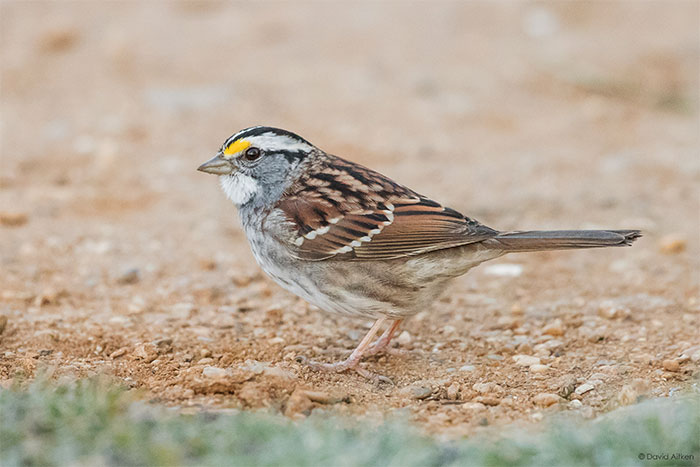
Whilst playing second fiddle to a certain mockingbird in birders’ affections thus far in 2021, there’s no denying the charm and pull exerted by the smart male White-throated Sparrow at Barcombe Cross (East Sussex) in recent days. He remained available for those prepared to make the journey to pay their respects this week – or at least, he remained there until 18th. After that, no further sign of a bird first found in East Sussex on 3rd February and, perhaps, seen earlier in the year in the opening days of January in Kent at Orlestone. Maybe this time no news really means he’s moved on.
The week’s seabirds kick off in Ireland where, in Co.Kerry, the first-winter Double-crested Cormorant at Carrig Island on 13th-16th was showing no signs of shifting just yet.
What were on the move, however, this week were White-billed Divers in Scotland, where numbers off the east coast began to mount, with at least 25 birds logged over the course of recent days. Peak counts came from reliable Portsoy (Aberdeenshire), where 11 birds were noted on 16th; preceded by the week’s next highest tally on 15th at Cullen (Moray), where seven birds were seen.
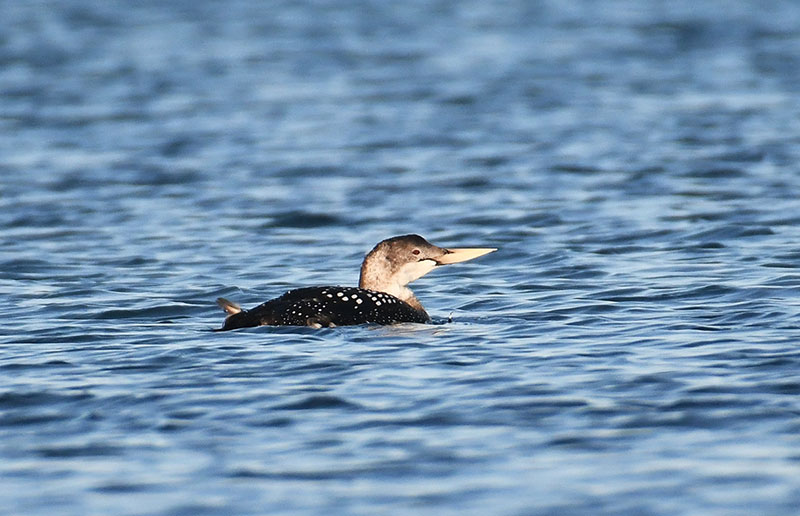
A Little Auk was reported from Bamburgh (Northumberland) on 14th.
Finally, a probable Pomarine Skua was seen heading up the Severn estuary off Oldbury power station (Gloucestershire) in the morning of 16th.
Slapton Ley (Devon) had the best of the long-legged beasties this week, with the first-winter Night Heron still present on 13th-19th joined there, on 16th-17th, by a Purple Heron.
A further, adult, Night Heron was found in Somerset at Meare on 14th.
Glossy Ibises continued to be seen in some numbers in the usual recent places. Starting in Devon, the three birds were again seen at Fremington Pill on 13th-19th; in Dorset the Stanpit Marsh bird was still present on 13th-18th; and in Kent, the Dungeness bird was still present on 13th-18th.
The trio of birds remained in Cambridgeshire at Earith on 13th-15th, with an excursion to Berry Fen on 16th, back at Earith again on 17th, and at Oxlode on 18th; a single bird was seen at Eldernell on 15th-16th. In Oxfordshire, the Otmoor RSPB individual was still present on 13th-19th; and in Northamptonshire, the Stanwick GPs bird was seen there more of less daily on 14th-17th, and at Thrapston GPs on 13th and 17th.
A further English sighting came from Greater Manchester on 16th, when a bird was seen passing over Heaton Park. On 18th, one was present in Norfolk at Denver Sluice, while another was in Wiltshire at Cotswold Water Park’s Cleveland Lakes, and three were logged over Caversham Heath Golf Course (Oxfordshire / Berkshire). On 19th, one was seen over Calvert Lakes (Buckinghamshire), while two birds were noted in the county at over Floodplain Forest NR. Moving to Ireland, single birds were logged on 14th at Ballinoulart (Co.Wexford) and Lough Currane (Co.Kerry).
Keeping up the recent trend for cool birds being sound recorded at the dead of night, a Spotted Crake was over Sandwich Bay (Kent) on 13th. A singing Corncrake was heard at Malin Head (Co.Donegal) on 14th; another was found in Cornwall at Rinsey Head the following day, and one more was found on 19th on Tory Island (Co.Donegal).
As is our wont while stocks last, we begin the honkers and quackers with The Goose Formerly Known As Canada. The interior Todd’s Canada Goose remained on North Uist (Western Isles) on 13th-14th, while another probable bird was seen in flight over Budle Bay (Northumberland) on 13th, and a possible bird was found on 19th in Aberdeenshire at St Fergus; and a hutchinsii Richardson’s Cackling Goose was seen on 16th-19th at Udale Bay (Highland).
Black Brants remained few and far between – the only birds noted this past week were the individuals on North Bull Island (Co.Dublin) again on 13th, and at Mersea Island (Essex) still on 14th.
The possible Grey-bellied Brant was still present this week at Lurgangreen (Co.Louth) on 13th.
Also hanging around, the white morph Snow Goose was settled on Lewis (Western Isles) on 13th-17th.
In Shetland, the drake American Wigeon remained at Loch of Spiggie on 13th; while in Cleveland sightings came again from Port Clarence on 14th and Saltholme RSPB on 15th.
Ten Green-winged Teals were logged across Britain and Ireland this week. Starting with the Irish contingent, birds were still present at Lough Beg (Co.Derry) on 13th-17th; Tacumshin (Co.Wexford) on 13th-18th; and Blennerville (Co.Kerry) on 14th-16th; with further sightings coming from Blanket Nook (Co.Donegal) on 14th-15th and near Rosslare harbour (Co.Wexford) on 16th. British sightings came from North Ronaldsay (Orkney) again on 13th-16th; at North Cave Wetlands YWT (East Yorkshire) still on 13th-19th; at Blairbowie (Ayrshire) still on 13th-15th; at Saltholme RSPB (Cleveland) again on 14th-19th; and in Highland at Tain Links again on 19th.
Numbers of Ring-necked Ducks were still solid, with around 30 birds noted nationwide in recent days. Once more, there were multiple birds at some locations – three remained on Siblyback Lake (Cornwall) on 14th, with five birds there on 18th; three were still present on Tiree (Argyll & Bute) on 15th-19th; three were found in Aberdeenshire at Loch of Skene on 18th; and duos were still on Talley Lakes (Carmarthenshire) on 14th and Radley GPs (Oxfordshire) on 13th-17th, followed by a second female joining the long-staying Dorset bird at Longham Lakes on 19th.
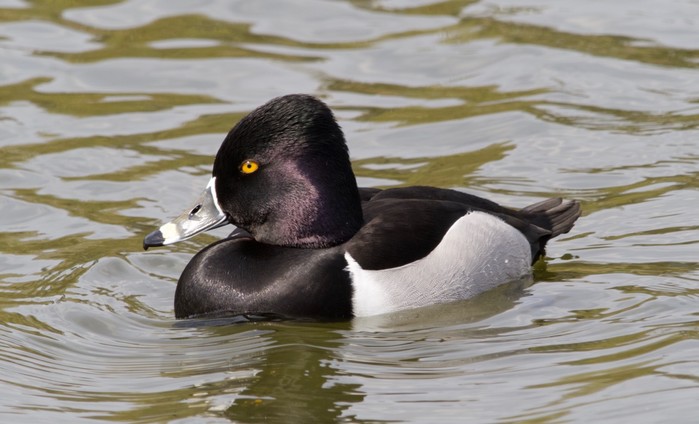
Pick of the diving ducks, however, was the smart drake Lesser Scaup that lingered on Lower Lough Erne (Co.Fermanagh) on 14th-17th.
Staying in Ireland a moment, the first-winter female Bufflehead was still present on her favoured lake near Nohoval (Co.Cork) on 15th-18th; while the two first-winter female King Eiders were still to be seen at St John’s Point (Co.Donegal) on 13th.
Scotland, meanwhile, was where it was at for Surf Scoters again this week, the exception being a couple of birds seen off the North Wales coast at Pensarn (Conwy) on 14th-15th. In Scotland, a drake lingered off Rattray Head (Aberdeenshire) on 13th-17th; in Lothian, two were still off Musselburgh on 13th-15th, while three drakes were present in Gosford Bay on 16th; and two birds remained in the Sound of Taransay off Harris (Western Isles) on 14th. On 19th, a final bird was seen in Aberdeenshire off Annachie Lagoon.
East Yorkshire continued to be graced (is that the word?) by the recent drake Hooded Merganser - taking a turn at D reservoir near Tophill Low NR on 14th-16th, back at Hornsea Mere on 17th again and, on 19th, back on D reservoir…
Last but not least, our honorary wildfowl, the resident adult male Pied-billed Grebe on Loch Feorlin (Argyll & Bute), was still present there on 17th.
Following hot on the heels of the prior week’s fresh Nearctic offering, the Wiltshire Buff-breasted Sandpiper, another Nearctic shorebird checked in this week – a Pectoral Sandpiper at Bothal Pond (Northumberland) on 16th-19th – followed by an American Golden Plover in Cornwall at Maer Lake CBWPS on 19th. Given how well we did for American vagrants of all kinds last autumn, it’ll be interesting to see what else is picked up heading north in the weeks to come…
In Ayrshire, the overwintering Spotted Sandpiper was still present at Culzean Bay on 14th-18th.

The Long-billed Dowitcher was once more seen at Scorton GPs (North Yorkshire) on 15th-19th. North Yorkshire also scored an elusive Lesser Yellowlegs at North Duffield Carrs on 16th.
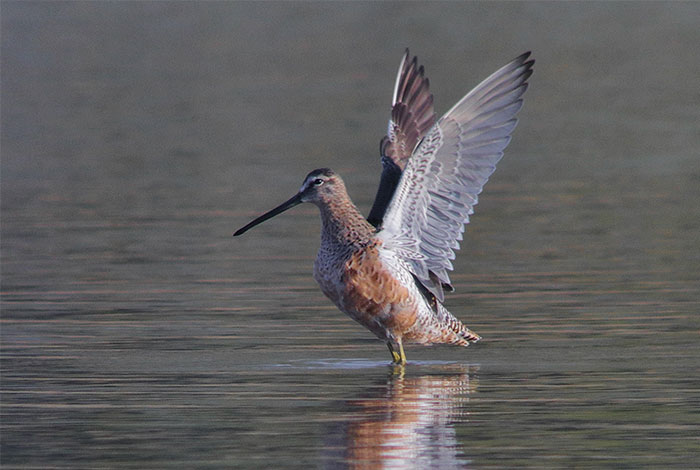
In Ireland, the Lesser Yellowlegs remained this week at Killongford Pools (Co.Waterford) on 19th.
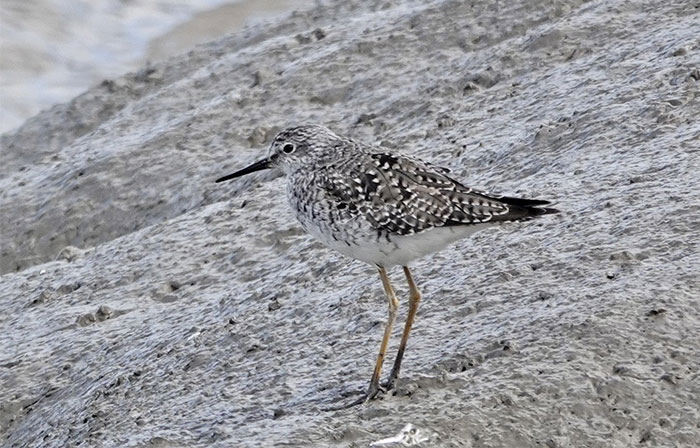
Two male Dotterels were found on Anglesey at The Range on 17th-19th, with one more seen in flight on 18th over St Mary’s (Scilly).
A Kentish Plover was seen on 19th at Ballycotton (Co.Cork).
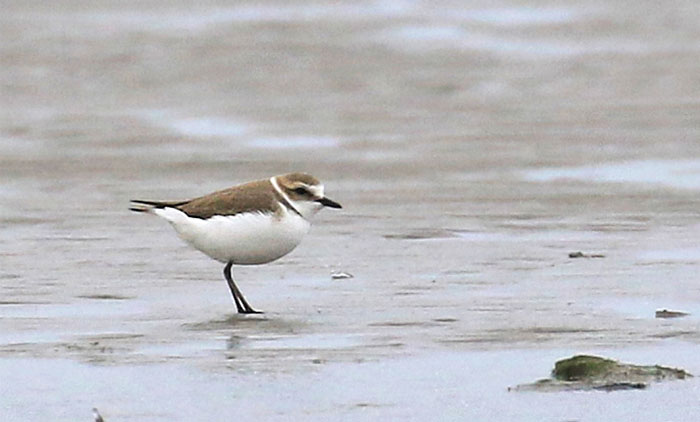
Finally, a Grey Phalarope lingered near Wells (Norfolk) at North Point Pools on 13th-18th.
The settled and popular first-winter American Herring Gull continued to lure admirers to Cornwall’s Newlyn harbour this week on 13th-19th.
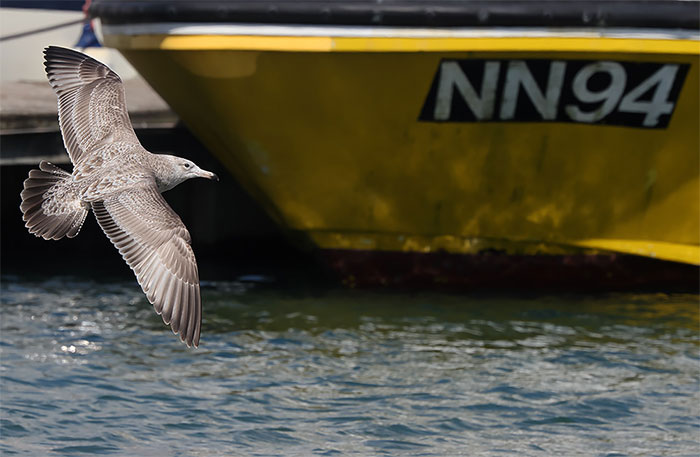
In Gloucestershire, the first-winter Bonaparte’s Gull remained at Frampton Pools on 13th-14th; a first-winter bird was found in Glamorgan in Cardiff Bay on 18th-19th.
Ring-billed Gulls are a fading winter memory now, with just one bird noted this week – a second-winter individual on South Uist (Western Isles) on 16th.
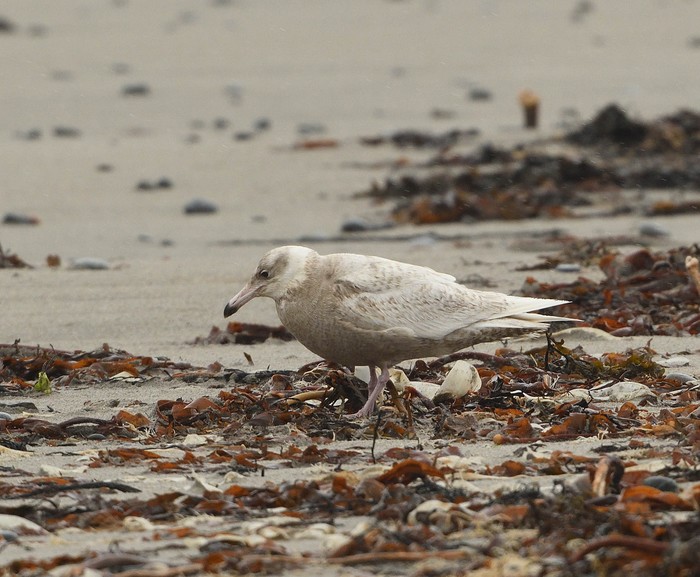
It won’t be long now before numbers of white-wingers follow suit, though the anticipated chilly northerlies of the coming week may do little to hasten their departure just yet. This past week, some 30 Glaucous Gulls and 70 Iceland Gulls were logged, representing pretty much an as-you-were situation on the prior week. Again, Killybegs (Co.Donegal) had the best of it, with six of the latter species again seen there on 13th.
In Cambridgeshire, the second-winter Kumlien’s Gull continued to haunt Smithy Fen on 13th-19th; a probable juvenile was seen at Big Waters NR (Northumberland) on 13th; an adult was at Blennerville (Co.Kerry) on 17th-19th, with the adult bird still present on Omey Island (Co.Galway) on 19th.
Dorset had the week’s harrier excitement, with a male Montagu’s Harrier found inland in the north of the county just outside Sherborne on 14th – an unthinkable rarity for those of us who grew up birding on Sherborne’s outskirts - followed, the next day, by a female down at the coast at Arne RSPB.
Male Montagu's Harrier on fields along Bradford Road about 1 mile west of Sherborne until 1945 when it flew. Great find by James Watson. @DorsetBirdClub @RareBirdAlertUK
— Tim Farr (@SuttonBingham) April 14, 2021
Apologies for the terrible pics! pic.twitter.com/87XsxIgDb9
A couple of Black Kites, including a bird well to the north, provided further clues to raptors on the move and heading our way in the weeks to come – one was found in Norfolk at Snettisham on 16th; while on 17th a bird seen initially in Orkney at Papa Westray had decamped, later in the afternoon, to neighbouring Westray. A further bird was reported from St Mary’s (Scilly) on 18th.
A Rough-legged Buzzard was seen in Kent at Stonar on 19th.
We’ll start the week once more in Co.Cork where, at Dunboy, the first-winter male Belted Kingfisher was still present on 16th-18th.
The lysergic delights of Bee-eaters remained available for a few – not least those on St Mary’s (Scilly), where a mobile bird lingered on 13th-19th. Elsewhere, one was found on 13th at Porthgwarra (Cornwall, and another was heard passing over Earls Barton GPs (Northamptonshire) on 17th.
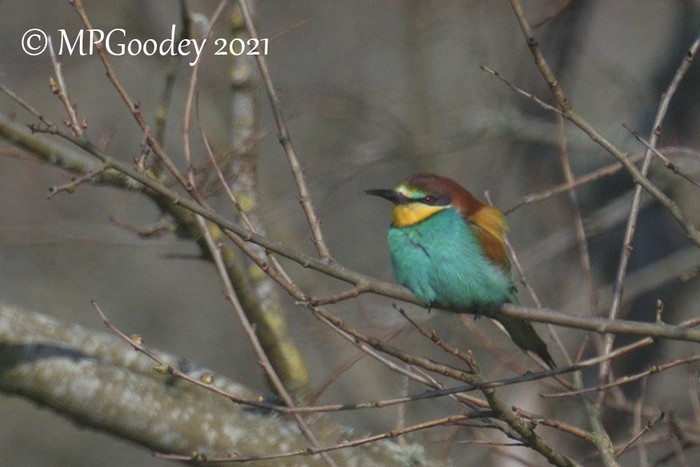
St Mary’s also hosted a Hoopoe this week on 13th-18th; further birds were logged in recent days at Unionhall on 14th and Cape Clear (Co.Cork) on 14th-19th; at Loch Laggan (Highland) on 15th; on St Martin’s (Scilly) on 15th-16th; on 17th at Carnsore Point (Co.Wexford) and Rye (East Sussex); and on 18th at Biddenham (Bedfordhsire) and Hinton Ampner (Hampshire). A further bird was reported from St Helens (Lancashire) on 16th.
Wrynecks were pushing north and west, with the furthest flung of them all on Eigg (Highland) on 14th. Elsewhere, one was near Nantwich (Cheshire) on 13th; another on 13th was present at Gunton (Suffolk); one lingered on Portland (Dorset) on 14th-17th; one was found on St Mary’s (Scilly) on 15th; and, on 19th, birds were found in Cley (Norfolk) and on The Lizard (Cornwall).
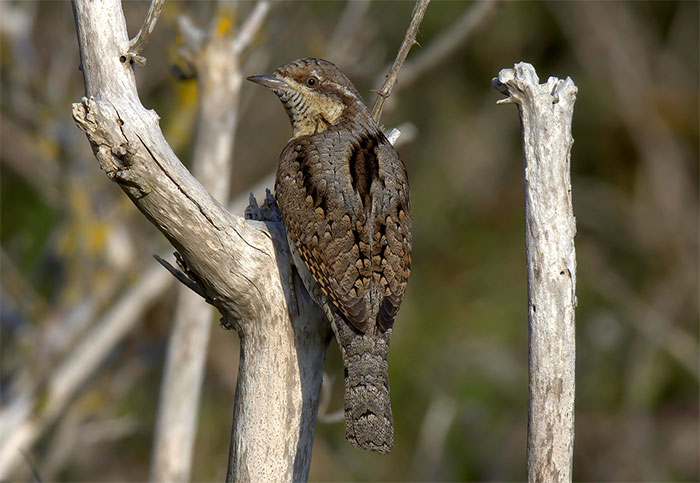
Just a handful of Great Grey Shrikes were confirmed this week – these being birds at Craig y Llyn (Glamorgan) still on 13th and on Hill of Fare (Aberdeenshire) also on 13th, and one still in Hampshire in Woolmer Forest on 18th-19th – with a couple of further reports coming from Dungeness (Kent) on 14th and Clawthorpe (Cumbria) on 15th.
In Somerset one of the recent Penduline Tits remained at Weston Airfield on 13th-14th.
Sadder news from Kent, where a Red-rumped Swallow at Westbere on 13th was taken into care that evening, and had passed away on 14th.
Watching this Red-rumped Swallow this evening at Westbere when it literally fell off it’s perch. Now in care with @WilsonMartyn pic.twitter.com/NsDRM4CCqX
— Brendan Ryan (@Brendan_A_Ryan) April 13, 2021
Another sighting of an Alpine Swift came from Pembrokeshire on 18th, when one was seen in the late afternoon over Nolton.
Two wintering warblers of note remained this week – the Yellow-browed Warbler still in West Sussex at Patching sewage works on 17th-19th, and the Dusky Warbler still singing at Ainsdale NNR (Merseyside) on 13th-18th.
A singing male Bluethroat was found at Titchwell RSPB (Norfolk) on 17th-18th, and reportedly still heard there on 19th too.
The second male Citrine Wagtail of recent weeks was a colourful find on Bryher (Scilly) on 14th-15th; the cherry on Bryher’s cake coming on 16th with a flyover Tawny Pipit. Another Scillonian Citrine Wagtail sighting came from St Martin’s on 15th.
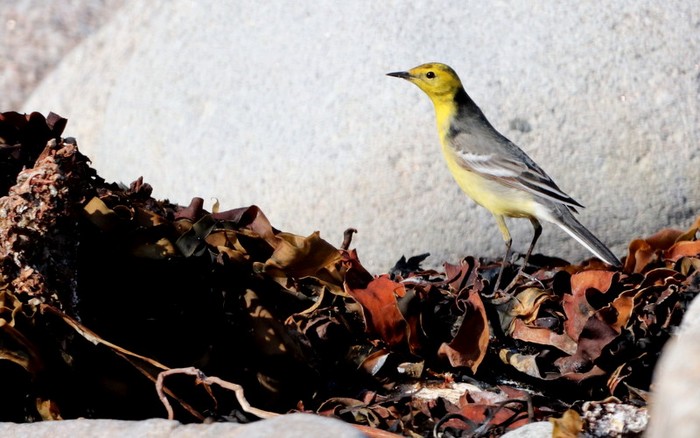
Blue-headed Wagtails continued to be found in reasonable numbers in recent days, with some 20 birds in all logged – the most pioneering of those being one in the far north, on Skaw beach on Unst (Shetland) on 16th-18th.
A possible iberiae Spanish Wagtail was seen on 15th at Sunderland Bridge (Co.Durham).
The recent first-winter female Two-barred Crossbill remained at Thoresby (Nottinghamshire) on 13th-14th.
The hornemanni Arctic Redpoll found in the prior week in a Voe (Shetland) garden was still present there on 14th; further Shetland sightings came from Brae on 13th and Foula on 15th. Another individual was found in Highland near Lochinver on 15th.
A trio of Serins provided a sunnier counterpoint to those frosty finches – one was found in song at Hill Head (Hampshire) on 16th, while another passed over Portland (Dorset) that day also, and on 19th one more was present in Kent at Abbot’s Cliff.
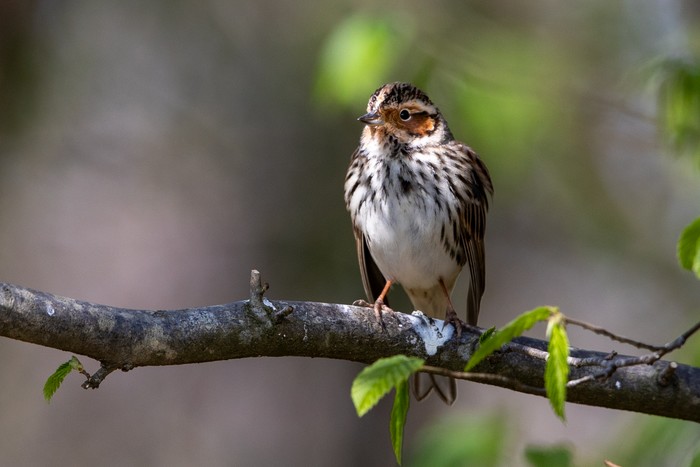
Five recent Little Buntings were again noted in the course of the week – the duo still present at Thursley Common NNR (Surrey) on 13th-18th; and single birds at Warnham LNR (West Sussex) on 13th-18th, Langford Lowfields RSPB (Nottinghamshire) on 13th-16th, and Trevilley (Cornwall) on 13th-18th still. A further bird was seen at Oldbury power station (Gloucestershire) on 13th.
We conclude the passerines where we began, with a Nearctic species – a report of a possible Northern Mockingbird northwest of Swindon (Wiltshire) at Rivermead on 15th sadly failing to become more concrete. Still, we shouldn’t grumble where they’re concerned given the obliging recent bird in Devon and Sussex…
Still finding the Welsh coast to his liking, the young male Walrus remained this week on the lifeboat slip at Tenby (Pembrokeshire) on 13th-19th.
Another week, another Large Tortoiseshell record – this time a probable insect at Burnham Overy (Norfolk). Surely someone’s going to find a larval web somewhere in the southern or eastern counties in the weeks to come?
Speaking of almost certainties, it’s surely also just a matter of time before the first wandering Black-browed Albatross of the year is seen from an English eastern coastal county. One was seen this week in Denmark on 17th heading northwest, and presumably back into the North Sea, past Grenen.
More intriguing food for thought still came from Germany’s Heligoland on 16th, with a flyover Black-winged Kite. That’s a longer sea-crossing away from the European mainland than the short hop over the English Channel at the narrowest point. A reminder that, were one to see the Kent coast from the French side of the channel, there’s really nothing stopping it from popping over for a spell.
Sticking with raptors a moment, a second-winter female Bonelli’s Eagle flew north over Holland’s Zalk on 14th. Also still present in the country, the drake Baikal Teal remained this week at Zevenhoven on 13th-18th.
Greece, usually a stranger to our overseas news, featured an Asian Desert Warbler at Thessaloniki on 19th.
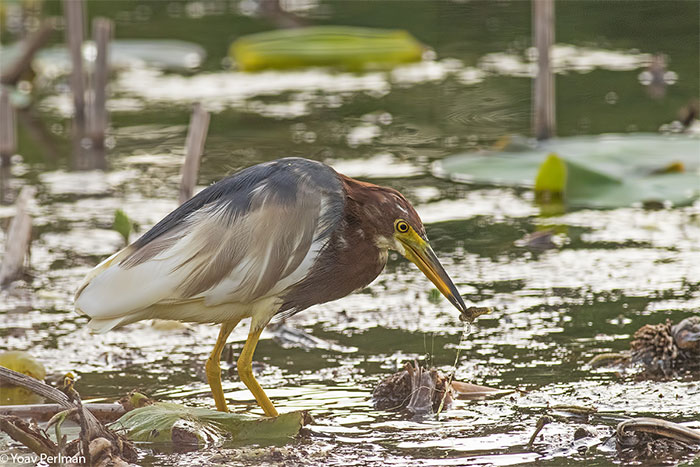
Moving further afield, in Israel the country’s first Chinese Pond Heron was found in Jerusalem Botanical Gardens on 13th, remaining there until 19th. As yet, the Western Palearctic’s two accepted prior records both relate to British sightings – birds seen in Norfolk and, latterly, Hampshire in October and November 2004; and in Kent in January-March 2014. This spring bird coincides nicely with the species being on the move, heading north out of their wintering range in the east.
Belated news brings the overseas section to a close – a Lesser Moorhen found on Fuerteventura in the Canary Islands on 19th March.
The week to come isn’t, at the time of writing, looking particularly great – the forecast seems set to be dominated by a big lump of high pressure parked over us and, down its flank, northerlies. That’s not terribly promising, given we’re pushing towards the end of April.
Given half a chance, the coming week sports all sorts of exotica – double figure historic records of Black Storks, Little Bitterns, Whiskered Terns and Black-winged Stilts. The coming week doesn’t feel like it’s going to give us half a chance, though.
(Probably best not to really daydream and look at our one and only Moussier’s Redstart, photographed at Dinas Head (Pembrokeshire) on 24th April 1988. Not one that’s likely to fall in the days to come…)
Best to aim a little lower in the days to come, and to take a leaf from the pages of more recent history. The last few months have been good ones for records of lost King Eiders, and the week to come is historically a strong one for records of them. While a drake, even a first-winter bird, sticks out like a sore thumb, females are a little more subtle, especially at a distance in a bobbing flock of Eider. A nettle that hopefully someone will grasp this week…

Jon Dunn
20 April 2021
Many thanks to all this week's contributors for your photos and videos
Share this story




